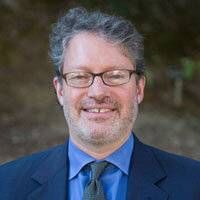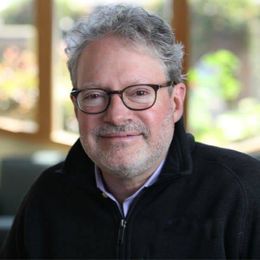Let's Make the Most of the Intergenerational Opportunity
When older people contribute to the well-being of youth, the engagement elevates both
(This article is the eighth in a weekly Next Avenue series, The Future of Aging: Realizing the Potential of Longevity published by the Milken Institute Center for the Future of Aging. It was originally titled Comity, Not Competition, Across Generations. The first article in the series was A New Model for the Future of Aging. The second was Personalized Aging: Extending Lifespans and Healthspans. The third was Boomers: Less Tied to Friends and Family Than Others Are. The fourth was What It Will Take for the U.S. to Profit From the Longevity Dividend. The fifth was Work, Retirement and Financial Security in the 21st Century. The sixth was Technology, Aging and the Coming Fifth Wave. The seventh was 5 Course Corrections Needed for a Better Future of Aging.)

For many years, pundits have predicted a coming generational war, a looming conflict between young and old driven by a great gray wave of greedy geezers who are intent on shoring up their own positions at the expense of helpless younger generations. This media trope has fueled countless articles about a cataclysmic battle pitting “kids vs. canes.”
In fact within families at least, interdependence among generations has rarely been stronger. Recent Pew Research polling found “no indication” of brewing strife between young and old. To the contrary, the Pew researchers concluded that “generational conflict ranks at the bottom of a list of potential group conflicts in the U.S.” That’s no surprise when we’re witnessing a dramatic increase in the number of 20- to 34-year-olds who share a home with their parents and with grandparents contributing in myriad ways to the lives of their children — and their children’s children.
A Realization From the Passage of Time
Indeed, the framework of inter-generational war runs against the grain of human nature. Erik Erikson, the pioneering scholar of human development, argued that older generations’ impulse to invest in younger ones is a hallmark of successful development. This drive is all the more pronounced as we reach a point in life when there are fewer years ahead of us than behind us. The passage of time brings us inescapably to the realization that humans are designed to pass the torch from generation to generation.
Erikson called this impulse generativity, encapsulated in his phrase “I am what survives of me.” Harvard Medical School professor George Vaillant, another expert in midlife development, states the concept even more fundamentally: “Biology flows downhill.”
In short, we’ve gotten the generational issue exactly wrong.
Narrowing the Opportunity Gap
The real imperative is not averting generational conflagration. Rather, it is making the most of the intergenerational opportunity ahead, through harnessing the natural affinity between young and old, particularly in ways that can narrow the opportunity gap facing so many young people.
Scholars who study the obstacles confronting young people argue that one of the most important ingredients of their future success — especially for those growing up in low-income environments — is the steady presence of caring adults with the time and inclination to support their development.
If one were to place a help-wanted ad for just such a human resource —for those who could provide the caring and connection so many young people need to learn and to thrive — the appeal would describe today’s (and tomorrow’s) older population: vast and growing, with deep-rooted generative impulses, the chance to gain greatly in health and well-being through engaging with youth, and possessed of the abundant relationship skills essential to the transmission of social capital.
On this last point, Stanford psychologist Laura Carstensen has shown that the emphasis on relationships and the very skills needed to nurture and develop close bonds grow stronger as we age.
An Urgent Need
The challenge, of course, is to transform this potential into practice, and most important, to do so in ways that extend generativity beyond families and into communities, building on the familial resilience uncovered by the Pew studies in ways that bridge age, class and race. As developed countries increasingly consist of larger older populations and smaller younger ones, this objective could not be more urgent.
Put differently it’s not enough for biology to flow downhill — society must do so as well to reap the benefits of intersecting longevity and demographic transformations. To that end, it is time for a call to action, urging the over-50 population to come forward, stand up and show up for kids, not only their own kids and grandkids but all “our grandkids.”
The 'Generativity Revolution'
And that call must be met with an expansion of opportunity and innovation — from service efforts through second acts focused on education and related work — that can transform the desire to leave the world a better place into concrete action capable of achieving what New York Times columnist David Brooks calls the “generativity revolution.”
A revolution it is, but one that restores the natural order of things.
Fifty years ago, we rerouted the river of live, often stymieing the opportunity for older and younger people to connect, segregating the gray-haired set into leisure villages and other age-bounded settings while telling them to cling to their fast-fading youth. Now is the time to return that river of life to its natural course.
Instead of urging the graying population to aspire to an endless youth, let’s encourage them to accept their age and embrace the spirit of purpose and legacy. They should aspire not to be kids, but rather to be there for those who actually are, for the youngsters who embody the future and are in need of our support.


